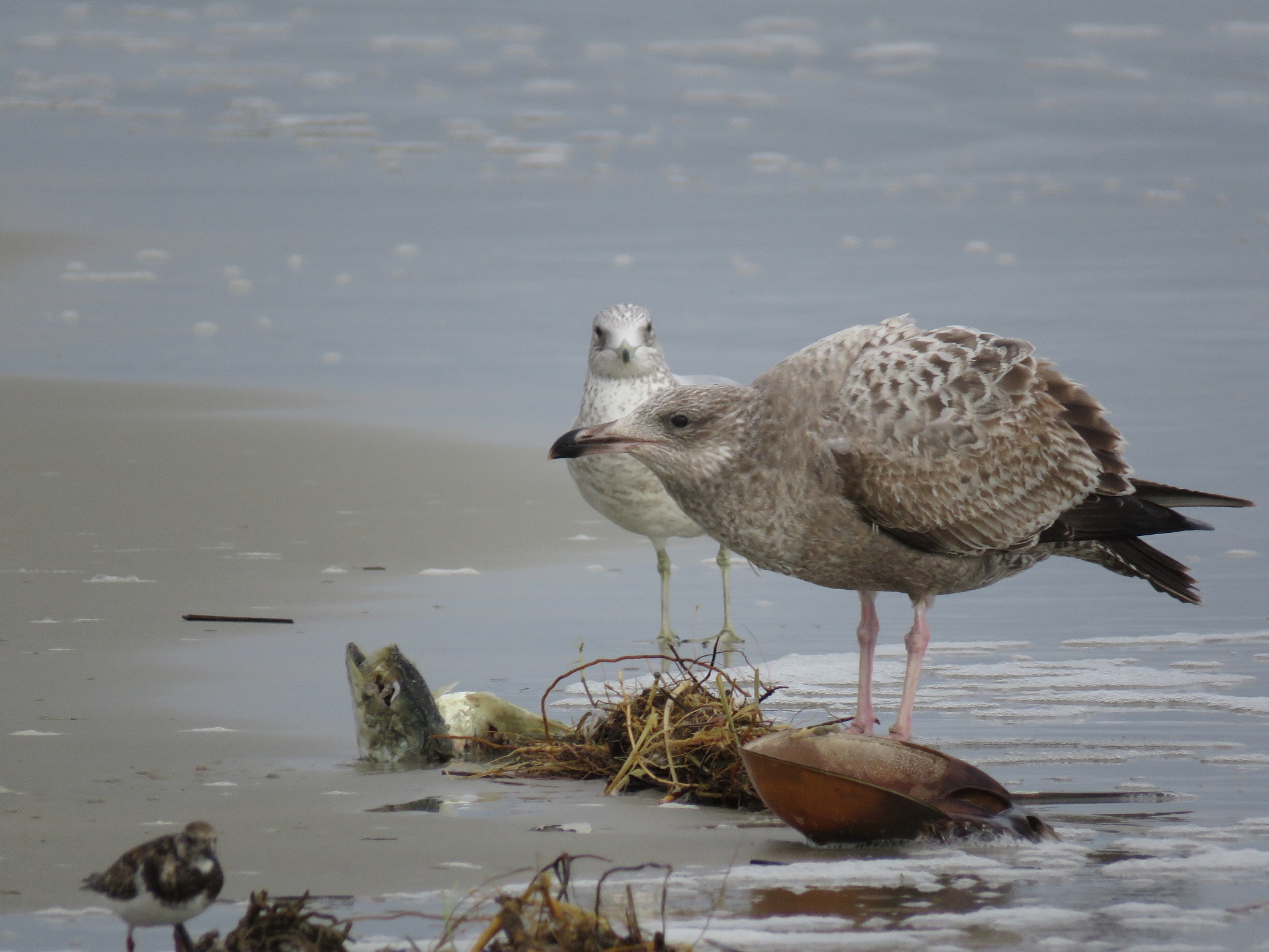
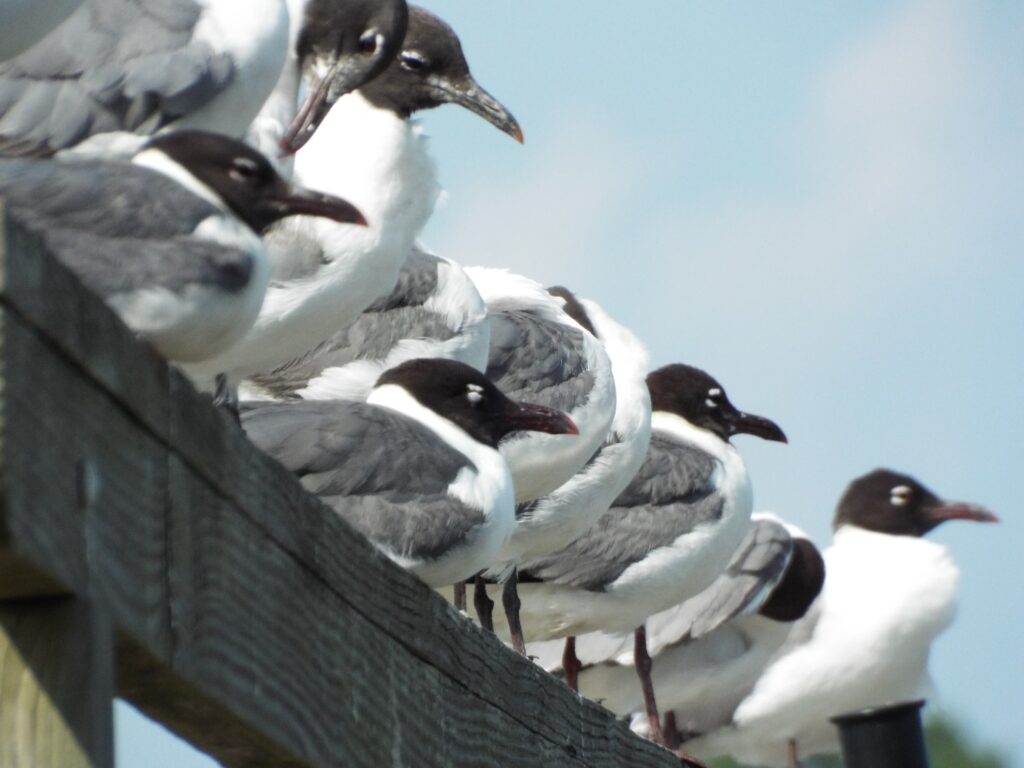
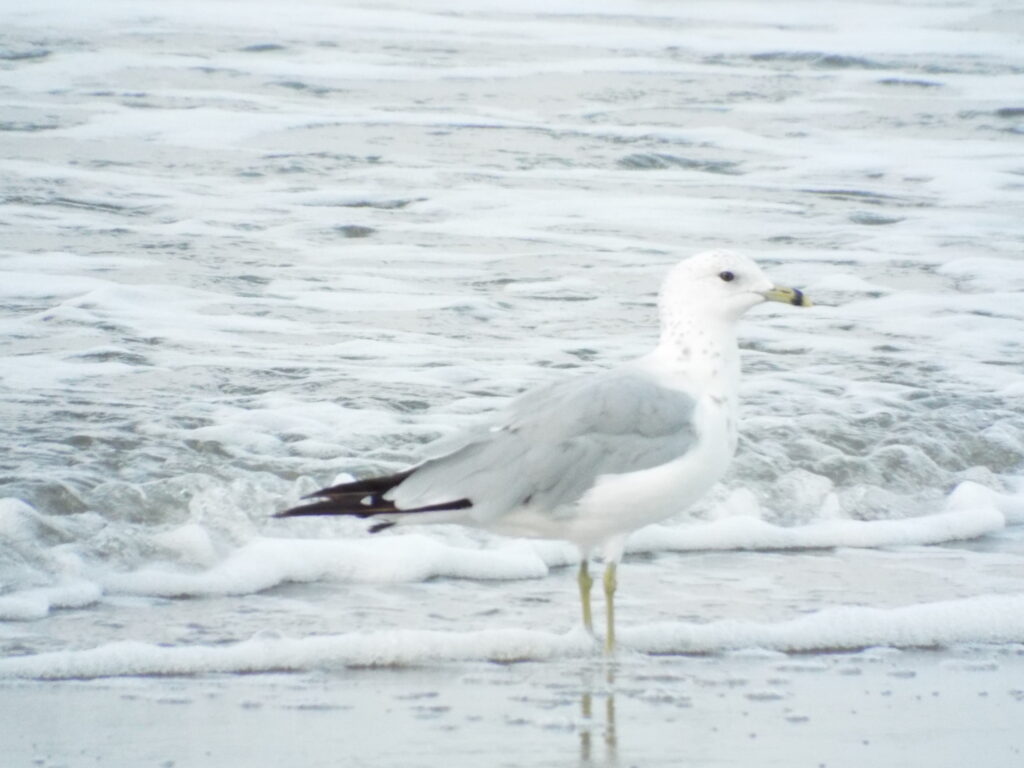
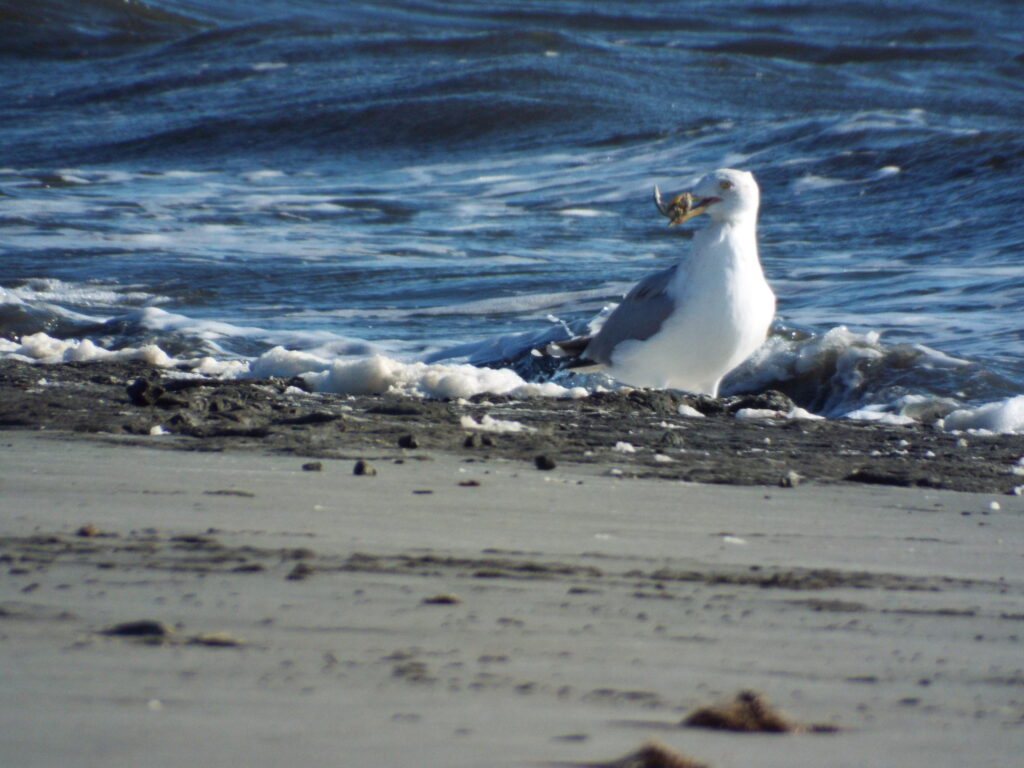

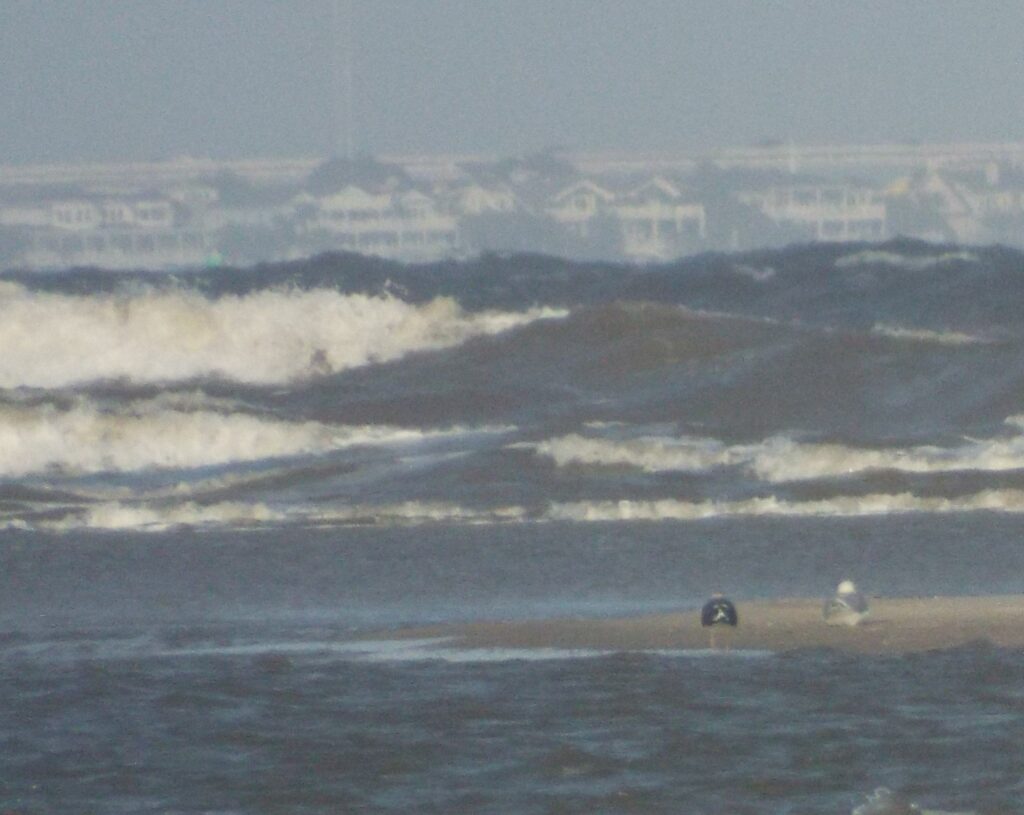
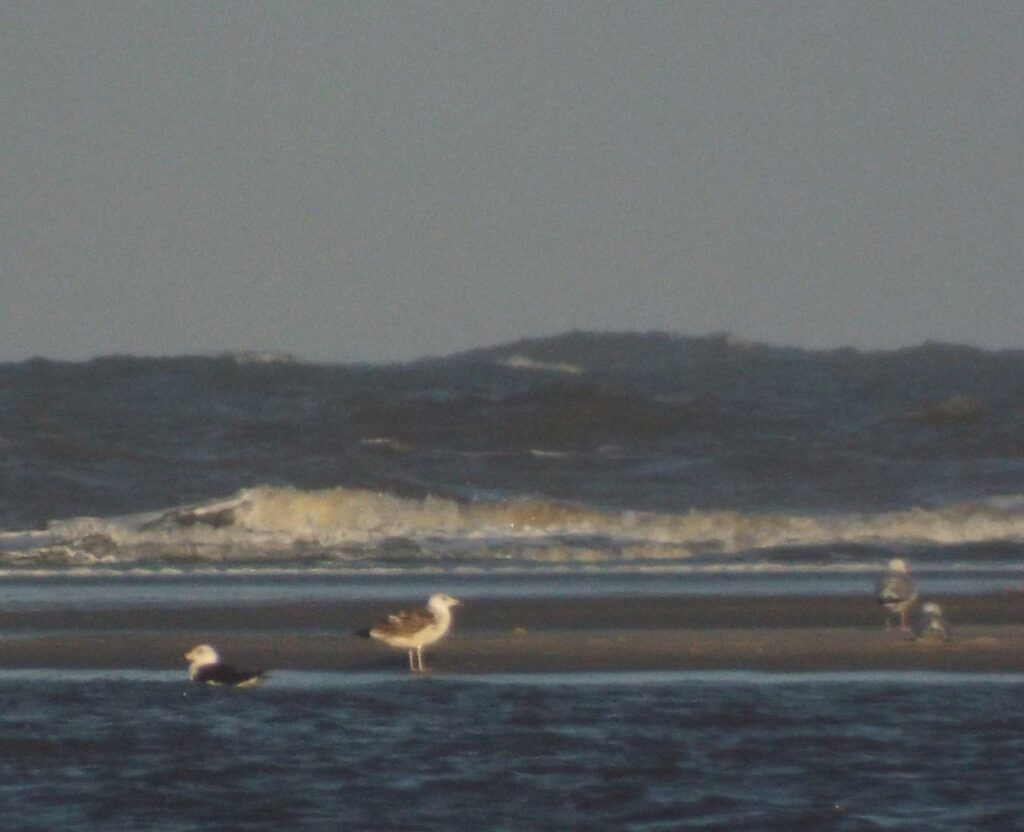
This week for Flora and Fauna Friday were taking a look at a clade of seabirds that are best represented on Edisto in the Winter. We’re talking about the Gulls.
First things first, the term seagull is not linked to any taxonomic designation. The proper term is just Gull. It’s semantics but that’s why I use the term Gull instead. Gulls are members of the family Laridae. This family includes Terns, Skimmers, Noddies, and Gulls. I’ll just be talking about Gulls, and only the 6 most common species in our area. Those species are the: Laughing Gull, Ring-billed Gull, Herring Gull, Bonaparte’s Gull, Lesser Black-backed Gull, and Great Black-backed Gull. I’ll spare you the Latin, this time.
Gulls are equally at home in the air, on the water, and on the ground They typically stay close to tidal systems, hence why people call them seagulls. Gulls can be quite challenging to identify because they take several years to reach sexual maturity and many have distinct winter and summer molt patterns. At each molt on their way to maturity, their feathers take on a new pattern that incrementally comes closer to that of the adult. These immature molt patterns can look remarkably similar across species, and without a size reference, can make ID difficult, even for seasoned birders. Gulls are opportunistic omnivorous seabirds that will eat anything that suits their fancy. They are primarily carnivorous and will hunt fish, crabs, shrimp, shellfish, rodents, insects, and even shorebirds. They are also scavengers and will eat any carrion that washes up on the shore. Most are also kleptoparasitic, meaning they steal food or other resources from other animals. Gulls are also well renowned for their ability to adapt to human environments and structures, such as marinas, Wal-Mart parking lots, and garbage dumps. That’s thanks mostly to their bold nature and opportunistic diet. This makes them equally at home feeding above a school of fish on the open sea, stealing a Tern or fisherman’s catch, swallowing wayward hotdogs whole at a ballpark, or picking at kitchen scraps at the municipal dump. This is an important ecological niche that Gulls, along with Crows, fill and their adaptability helps fill ecological voids that might otherwise be exploited by more harmful invasive species, such as Black Rats and Feral Pigeons.
In our area two species of Gull dominate the inland and coastal habitats. Those are the Laughing Gull and Ring-billed Gull. Let’s talk about the Laughing Gull first. The Laughing Gull is our most common Gull and dominates the island in the warmer months. In the winter, some head further south but they are always present in number year round. They are named for their distinct call, which sounds a lot like laughter. The laughing gull is our second smallest gull and is easily identified by its size, dark legs and bill, slate gray back, and dark head in summer.
The Ring-billed Gull is our most common gull in winter, especially inland from the barrier islands. It and the next 4 gulls are all primarily winter residents of the island. The Ring-billed Gull is a medium sized gull that’s noticeably larger than a Laughing Gull. They are paler in appearance, lacking any markings on the head. They are identified by their yellow legs, pale gray back, and yellow bill with a conspicuous black ring.
The Bonaparte’s Gull is our smallest Gull. It’s seen on the open water along the coast. They tend to flock and hunt sea life more than other Gulls which typically scavenge alone. They are easily recognized by their diminutive size, slender frame, small thin bill, pink-orange legs, pale wings, and a small black spot behind their eye in the winter.
The Herring Gull is one of our larger Gulls. It’s most abundant in the winter but immature birds can be seen fairly regularly along the coast in the summer. They look quite similar to the Ring-billed Gull but the Herring Gull is substantially larger, has pink legs, and a heavier bill with a red spot on the bottom tip of the bill.
The Lesser Black-backed Gull is also a large Gull and is much less abundant than the other Gulls mentioned. It is restricted to the immediate coast in our area. They are primarily winter residents but immatures occasionally stick around over the summer. It looks very similar to the Herring Gull and is only slightly smaller. The Lesser Black-backed Gull is best distinguished by its yellow legs and slate gray back.
The Great Black-backed Gull is our largest Gull. It is substantially larger than even the Herring Gull. In flight they always give me the impression of a compact Bald Eagle, especially from above. They are also fairly uncommon and restricted to the beachfront. They look quite similar to the Lesser Black-backed Gull but the Great Black-backed Gull is distinctly larger with pink legs and a back ranging from slate gray to charcoal black.
I’ve included photos of adults each species (some much better than others) and for fun I also included a distant photo of multiple species to give an idea of what makes this group difficult to ID.
Whether we may want to or not, we share our island, our beach, and the handrails of our docks and boats with Gulls. No matter how tough things get, they’re a group of species that’s here to stay. I hope you learned something about these birds beyond their proficiency at whitewashing decking lumber or swallowing half-eaten hamburgers. We should have an appreciation for the group’s species richness and their place in our coastal ecosystems.